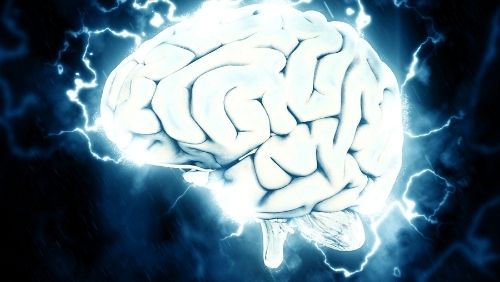
In 2017, the International League Against Epilepsy revised how seizures are classified. They are now classified first by the area of origin (onset) and then by levels of awareness (aware/impaired) and by movement (Motor/Non Motor). You can read more about these classifications by visiting the International League Against Epilepsy website and by reading their announcement on these changes.
However, despite the new terminology that is being widely used in clinical settings today, people with epilepsy and their families can still hear the older or outdated terminologies being used from time to time. Therefore, we have outlined below the new terms for seizure classification; the older terms that were previously used; and the outdated terms.
- New Term: Generalised Onset Motor; Older Term: Generalised Tonic Clonic; Outdated Term: Grand Mal; Major motor; Convulsion.
- New Term: Unknown Onset Tonic Clonic; Older Term: Generalised Tonic Clonic; Outdated Term; Grand Mal, Major Motor; Convulsion.
- New Term: Generalised Onset Non-Motor; Older Term: Generalised Absence; Outdated Term: Petit Mal.
- New Term: Focal Aware Motor; Older Term: Simple Partial/Aura; Outdated Term: Jacksonian.
- New Term: Focal Aware Non-Motor; Older Term: Simple Partial/Aura.
- New Term: Focal Impaired Motor; Older Term: Complex Partial; Outdated Term: Psychomotor Temporal Lobe.
- New Term: Focal to Bilateral Tonic Clonic; Older Term: Secondary Generalised; Outdated Term: Grand Mal, Major Motor, Convulsion.
- New Term: Focal/Generalised Myoclonic; Older Term: Myoclonic; Outdated Term: Minor Motor.
- New Term: Focal/Generalised Atonic/Tonic; Older Term: Atonic/Tonic Drop Attack.
- New Term: Focal/Generalised Clonic/Tonic; Older Term: Clonic/Tonic
Generalised Onset seizures
In these seizures abnormal electrical activity affects both sides of the person’s brain and they may lose consciousness, sometimes so briefly that no one may notice. What symptoms are seen depend on whether it is a generalised non motor or generalised motor seizure.
- Generalised Non Motor Seizures include typical and atypical absences.
- Generalised Motor Seizures include tonic-clonic, tonic, clonic, atonic, and myoclonic.
- Absences are staring spells lasting only seconds but consciousness is lost briefly.
- Tonic-clonic seizures have loss of consciousness and convulsive movements of the limbs. This is the type of seizure that most people think of when they think of epilepsy.
- Myoclonic seizures involve brief jerking of the whole body, or more often the arms or legs, but not always loss of consciousness.
- Atonic seizures are also known as drop attacks where the body suddenly loses tone, goes limp and falls to the ground.
- Tonic seizures involve stiffening of the whole body and the person will fall if not supported.
- Clonic seizures involve the jerking phase of a seizure by itself where the limbs may jerk without the tonic or stiffening phase happening first
Focal Onset
Focal (formerly partial) seizures start in one part of the brain. Focal seizures divide into:
- Focal Aware (formerly Simple Partial) – the person may experience a range of symptoms including déjà vu, jerking movements, a taste or smell.
- Focal Impaired (formerly Complex Partial) – awareness is affected to some extent, symptoms vary. There may be confused behaviour and wandering.
- Focal to Bilateral Tonic Clonic (formerly Secondary Generalised) – seizures start in one part of the brain and spread to affect both sides to become a full tonic clonic seizure.
- Focal seizures may or may not affect consciousness (aware or impaired) and may or may not affect movement (motor or non motor).
Unknown Onset
Where the area the seizure starts in is unknown. These may either have Motor or Non Motor symptoms.
Key Points about Seizures
- A single seizure may not be epilepsy.
- In seizures consciousness may be lost fully, partly or not at all.
- Seizures vary greatly between people.
- Most major seizures last from 1-3 minutes.
- Triggers include excess alcohol, skipped meals and missed sleep.
- Absences are staring spells often mistaken for daydreams.
- Some seizures feature wandering, confusion or agitation.
- Prolonged seizures are treatable with emergency medication.
- Seizures occur when normal brain activity is briefly disrupted.
- Our brains work on electrical impulses.
- Too much electricity can lead to seizures.
- Seizures are short and usually stop naturally.
- Not all seizures are the same.
- Not all seizures are due to epilepsy.
Functional Seizures (aka Non-Epileptic Attack Disorder)
Functional seizures are not a type of epileptic seizure which is why these types of seizures are also commonly known as Non-Epileptic Attack Disorder or Non-Epileptic Seizures. Despite the seizures not being epilepsy-related, given how they present and the fact that some people with epilepsy can have a dual diagnosis of epileptic seizures and functional seizures, our team at Epilepsy Ireland do receive queries around these types of seizures. This is why we have added this information resource on our website, in conjunction with the Department of Psychology at Beaumont Hospital.
The resource contains key information about functional seizures and is available to read or download at the end of this page. We would like to thank our colleagues in Beaumont Hospital for sharing this resource with us and hope that it provides key information to people seeking to learn more about Functional seizures. However, as noted in the resource, functional seizures are not a type of epilepsy and the most common form of treatment is via psychology. Therefore, we are limited in the support we can provide to those living with a sole diagnosis of functional seizures as we are not a psychological support service and our expertise does not extend into psychological techniques and management.
